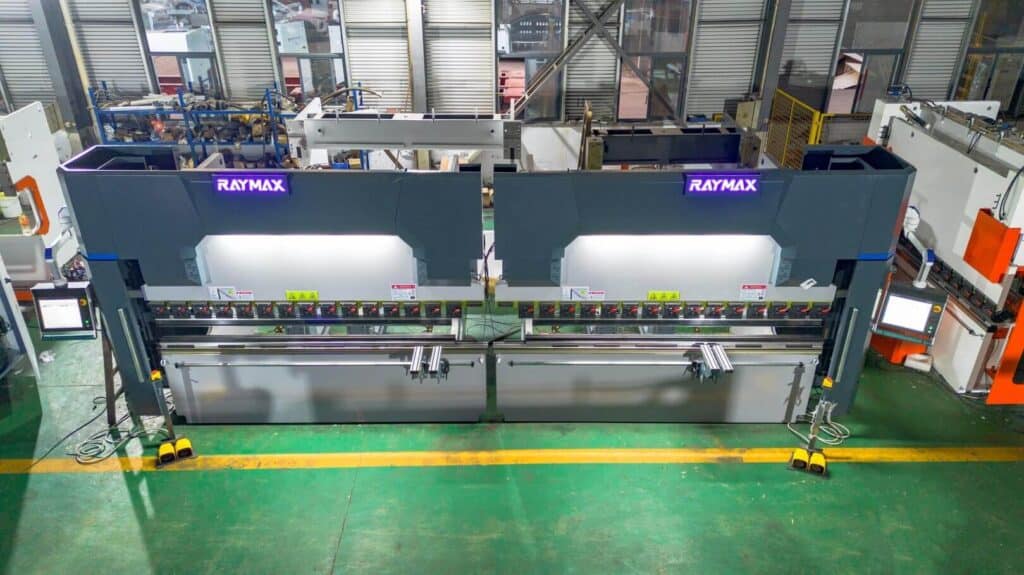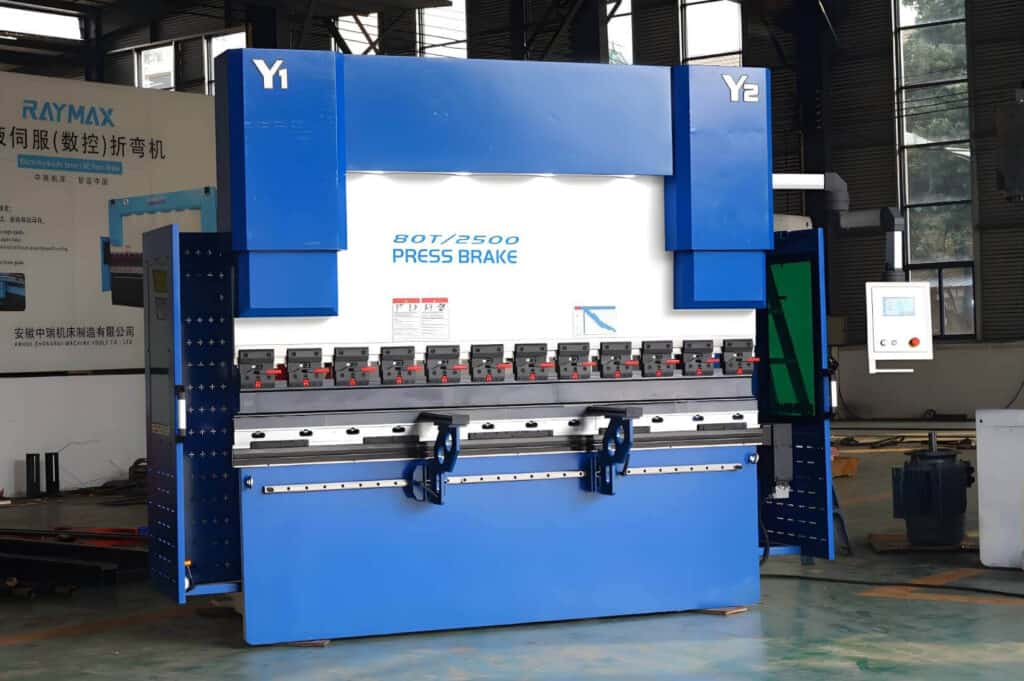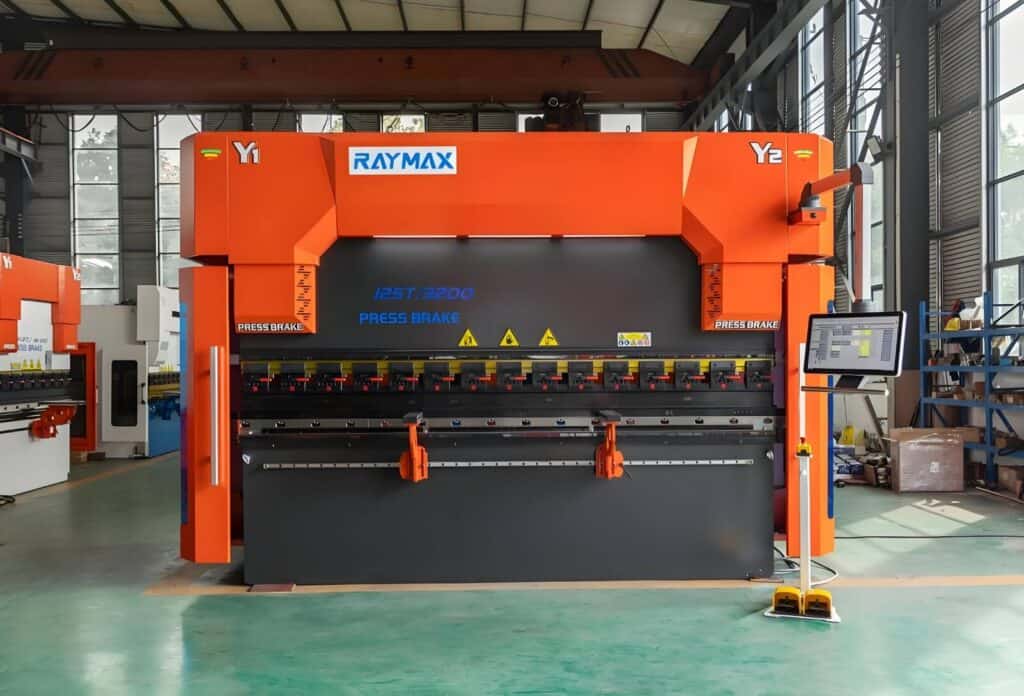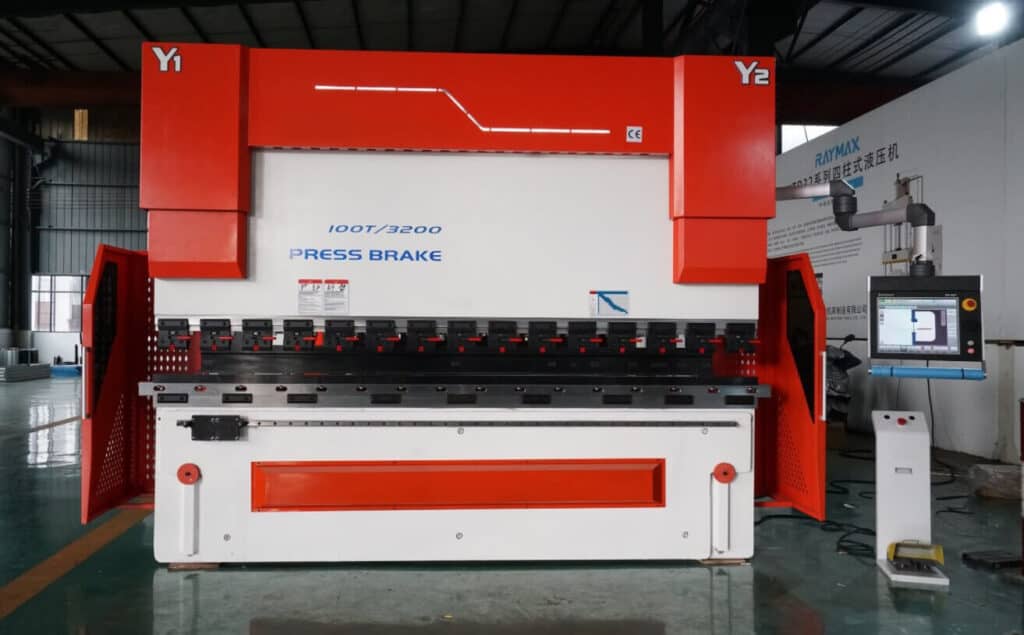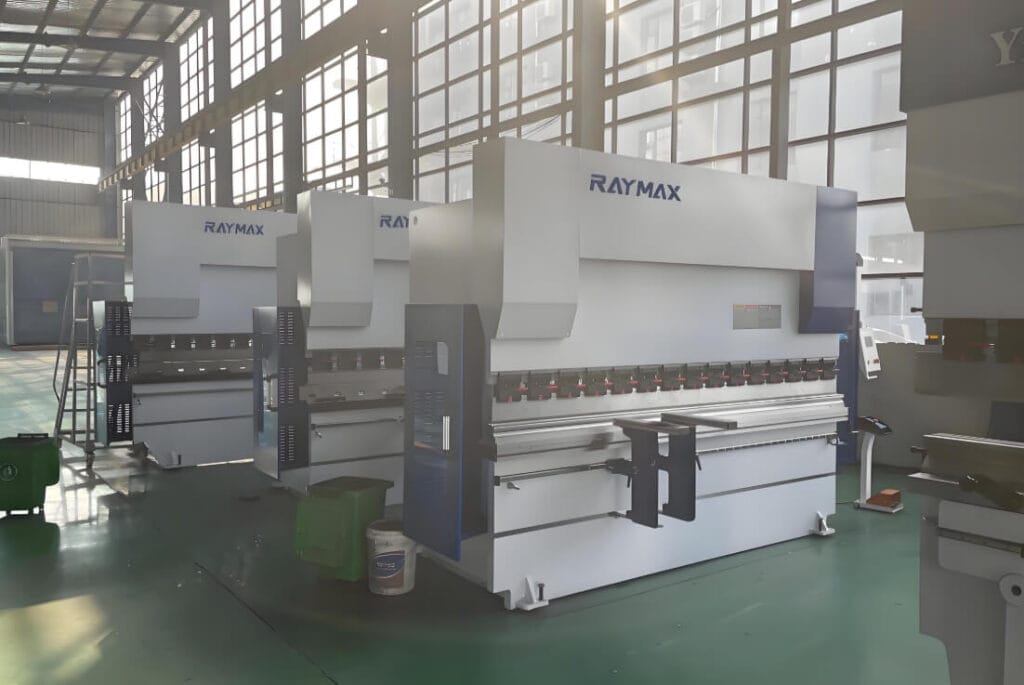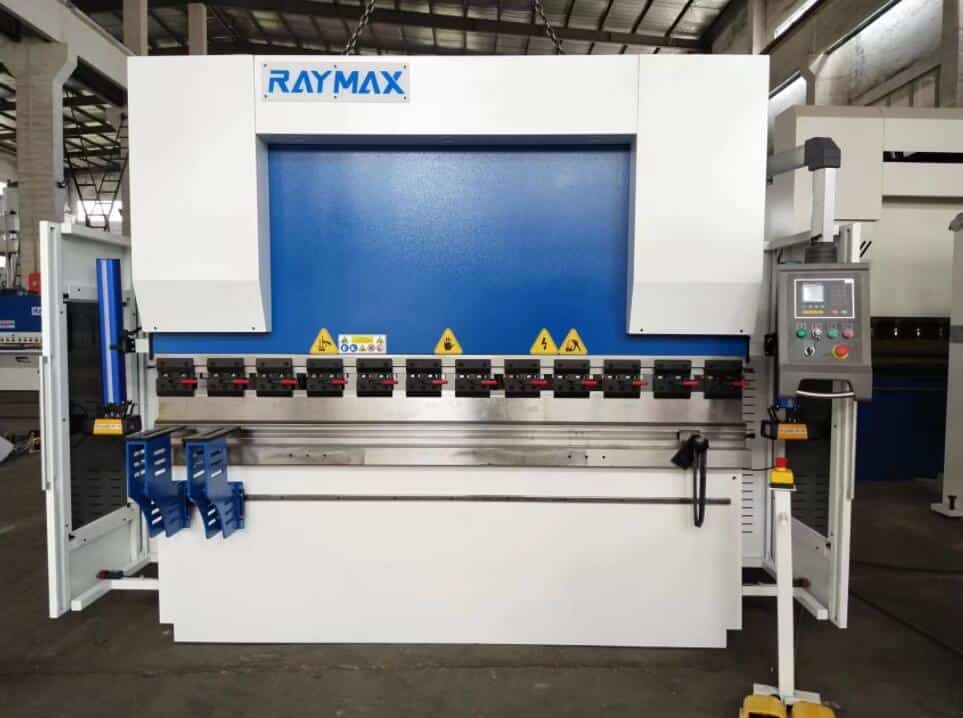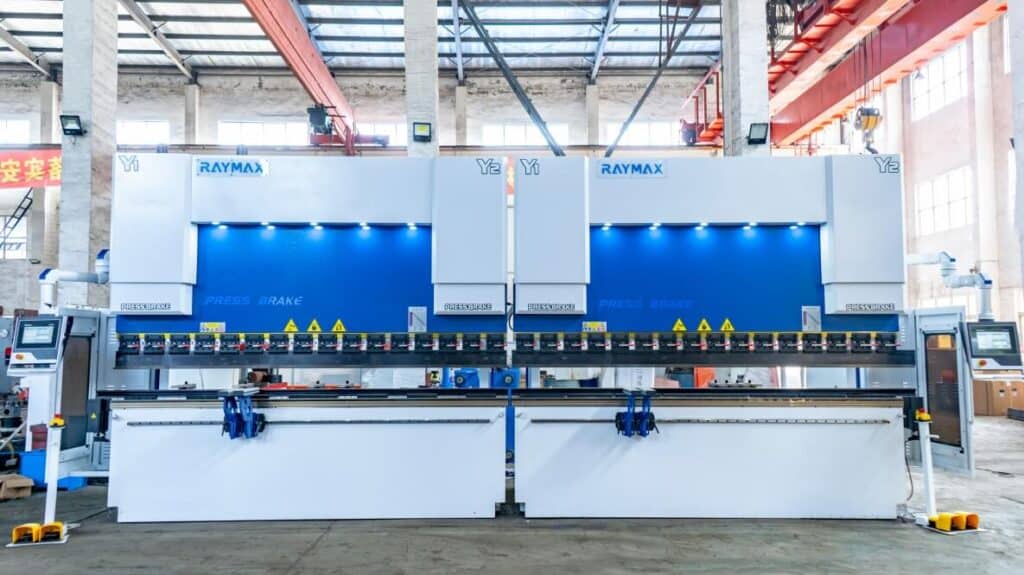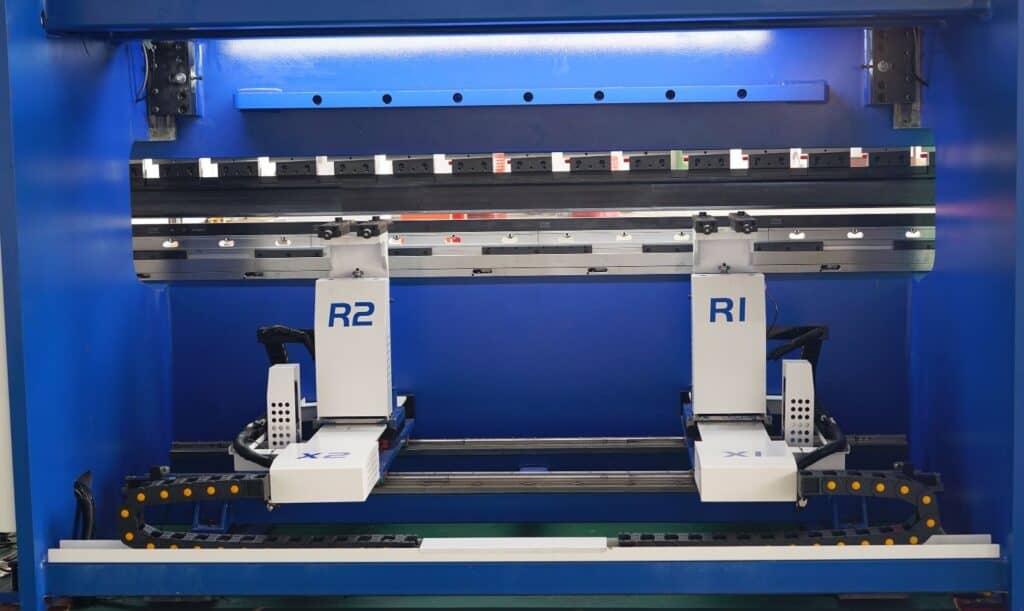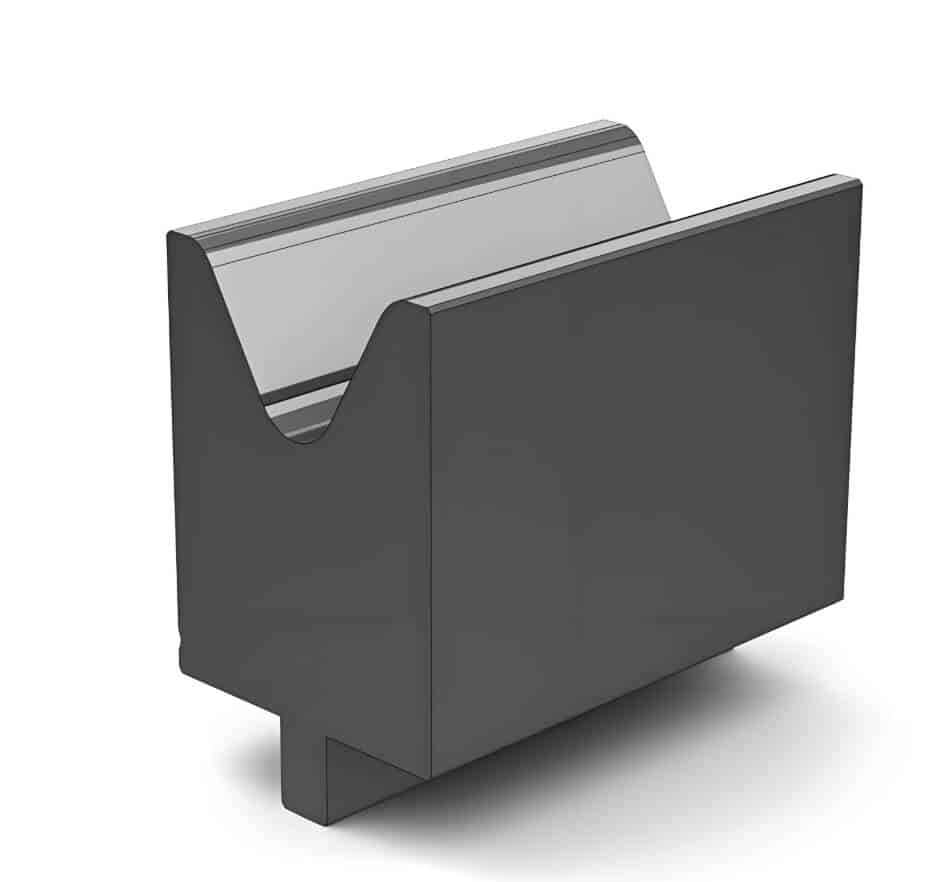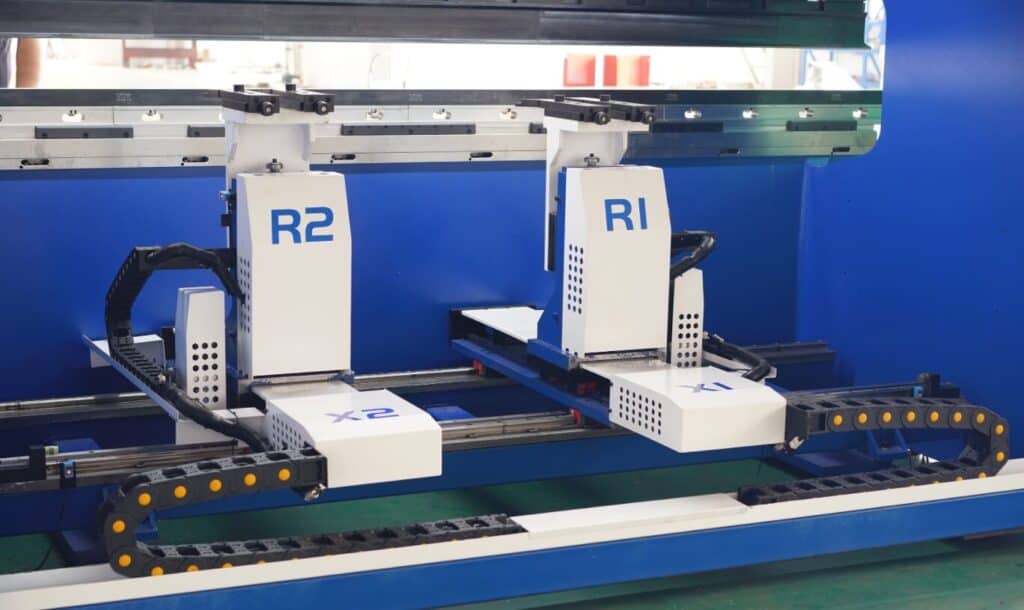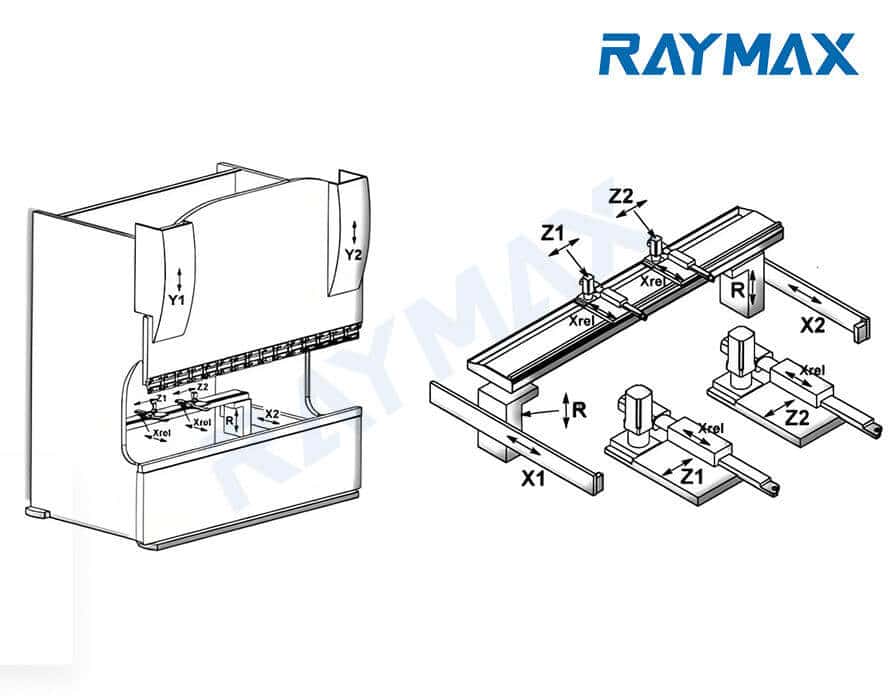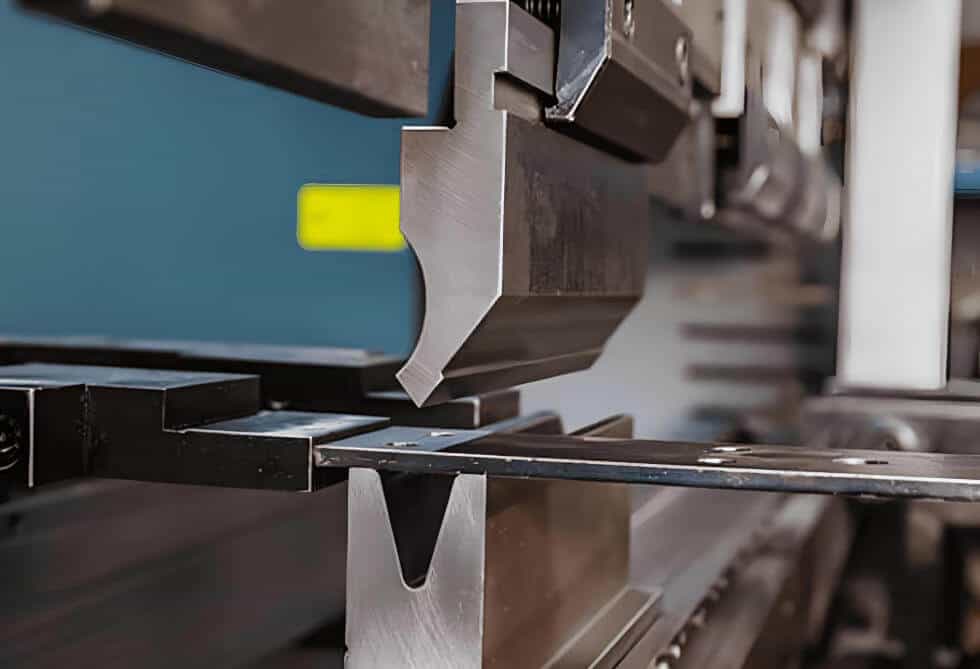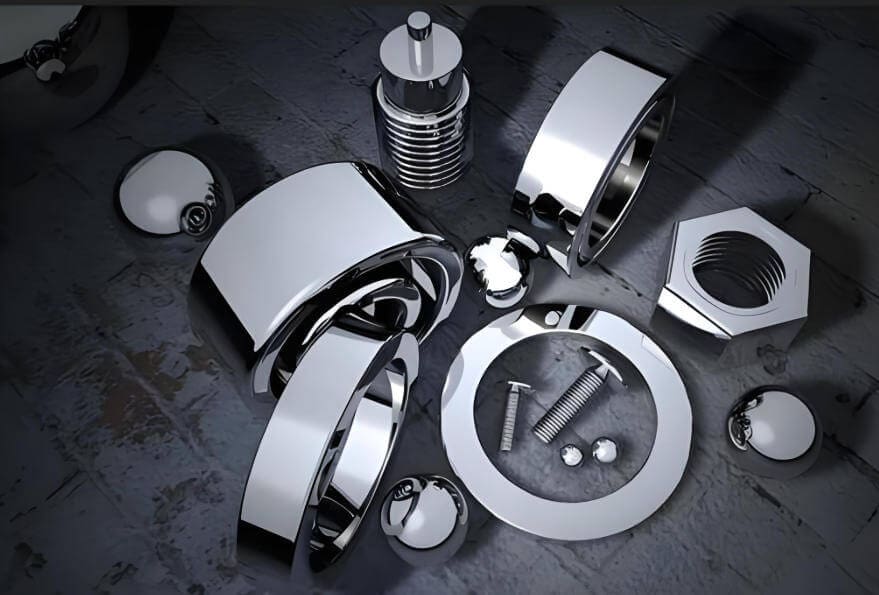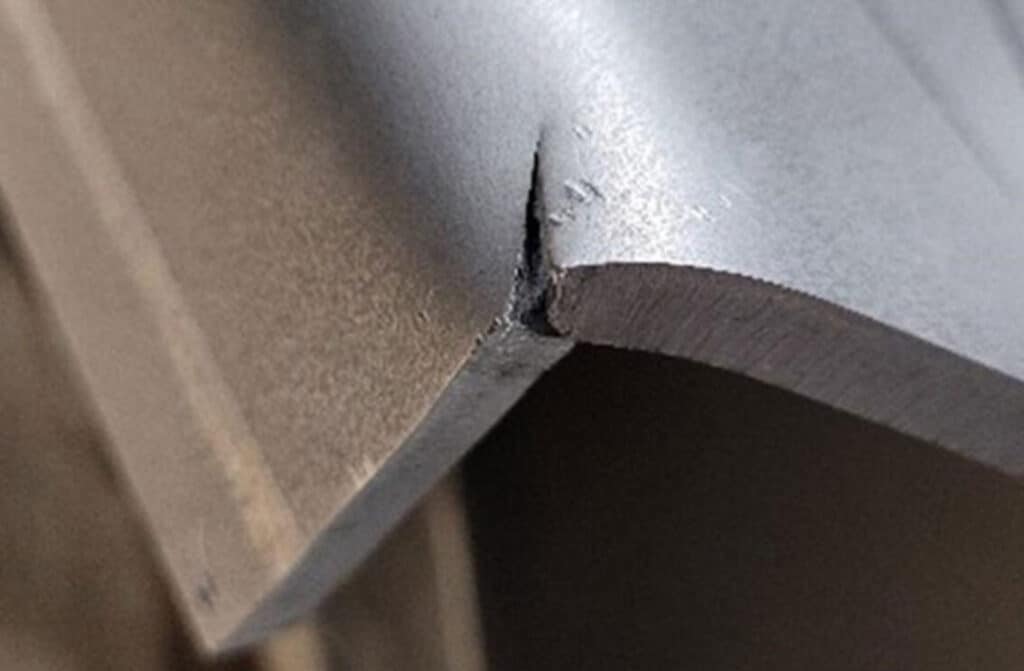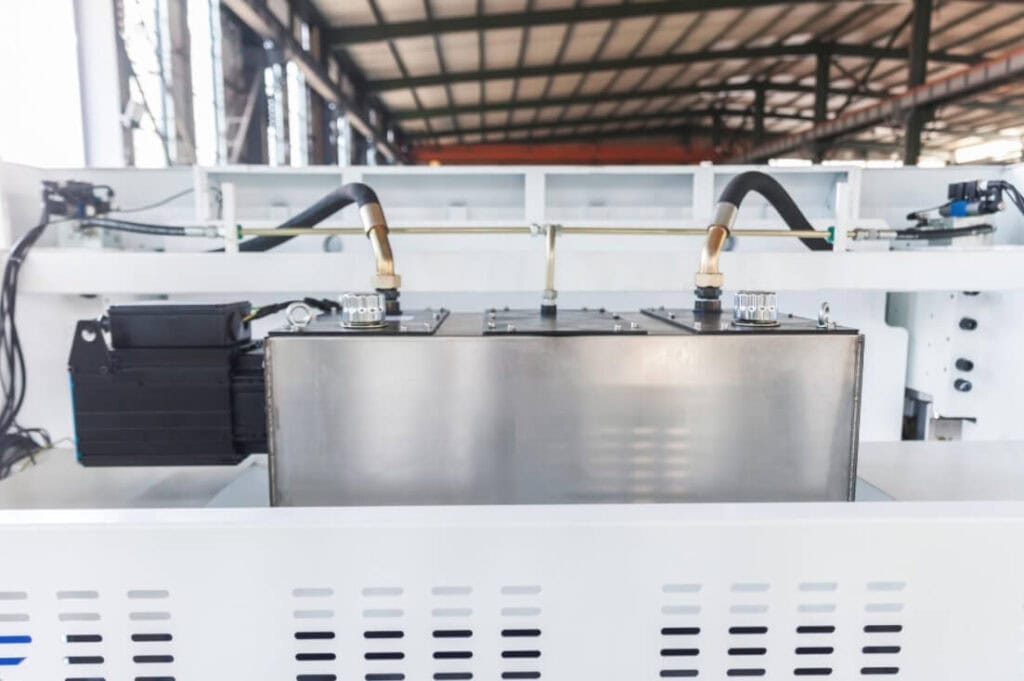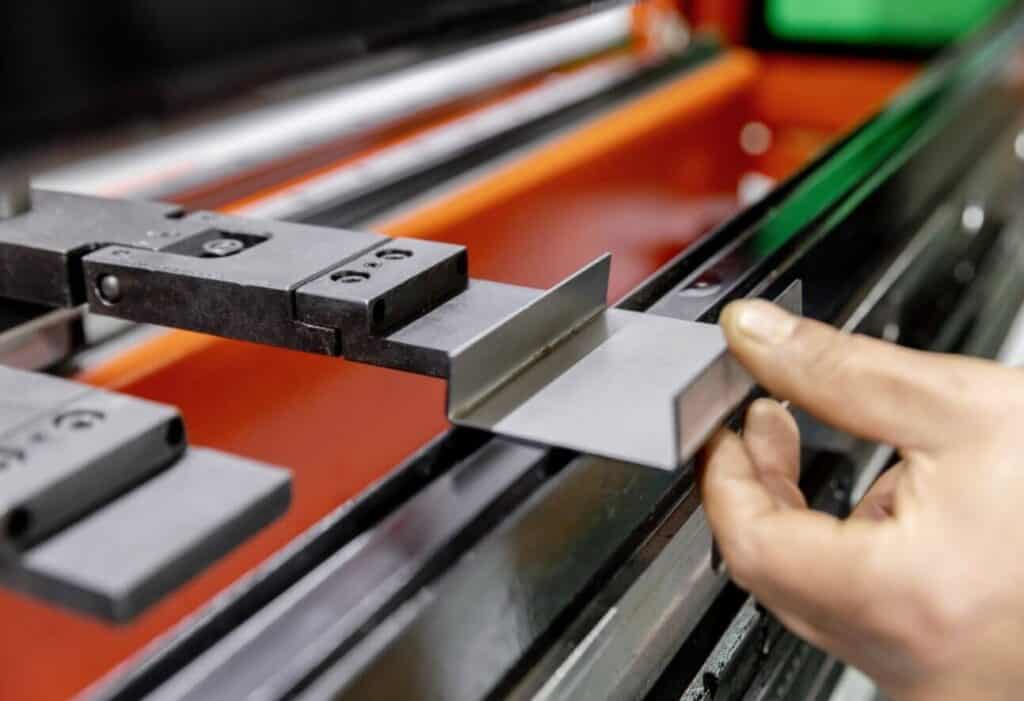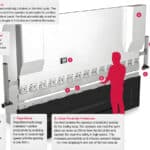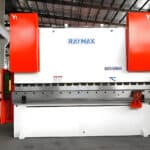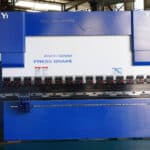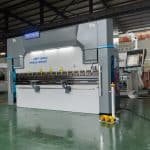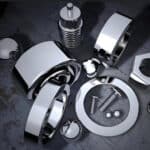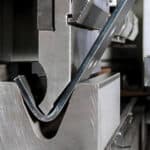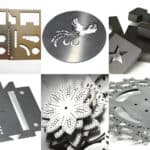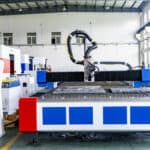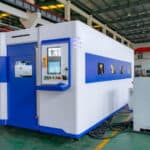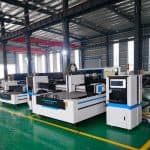1. What is press brake hydraulic cylinder?
1.1 Definition of Hydraulic Cylinder
A hydraulic cylinder is a component in a hydraulic system, and it is the core that provides power to the mechanical system.
1.2 The basic working principle of hydraulic cylinders
The hydraulic ram uses the incompressibility of the liquid to lock the liquid in the sealed device, and then controls the flow direction of the liquid to form a pressure difference, so as to realize the function of the hydraulic ram to exert power to the rest of the machinery. The pressure and flow rate of a hydraulic cylinder directly determine the power it outputs.
1.3 Its central role in the power system of the press brake
The hydraulic cylinder is the power output source of the power system of the press brake, which converts the liquid pressure into the accurate power of other molds of the brake press, and completes the forming, bending and other operations of the metal plate, which is a key component to achieve high precision and stability.
2. The working mechanism of the hydraulic cylinder of the press brake
2.1 Explanation of the main components of the hydraulic cylinder
2.2 Brief description of work process (including hydraulic system diagram)
First of all, the hydraulic pump opens the pump to absorb the hydraulic oil, then the hydraulic oil goes to the hydraulic cylinder under the action of the hydraulic valve group, and then the hydraulic oil generates a hydraulic difference in the cylinder to push the piston to move, and finally the piston pushes the mechanical movement and exerts bending force on the plate.
This is a cycle. When a cycle is completed and the piston rod needs to be retracted, the reversing valve acts again, changing the direction of oil flow, and the piston moves in the opposite direction to enter the next cycle.
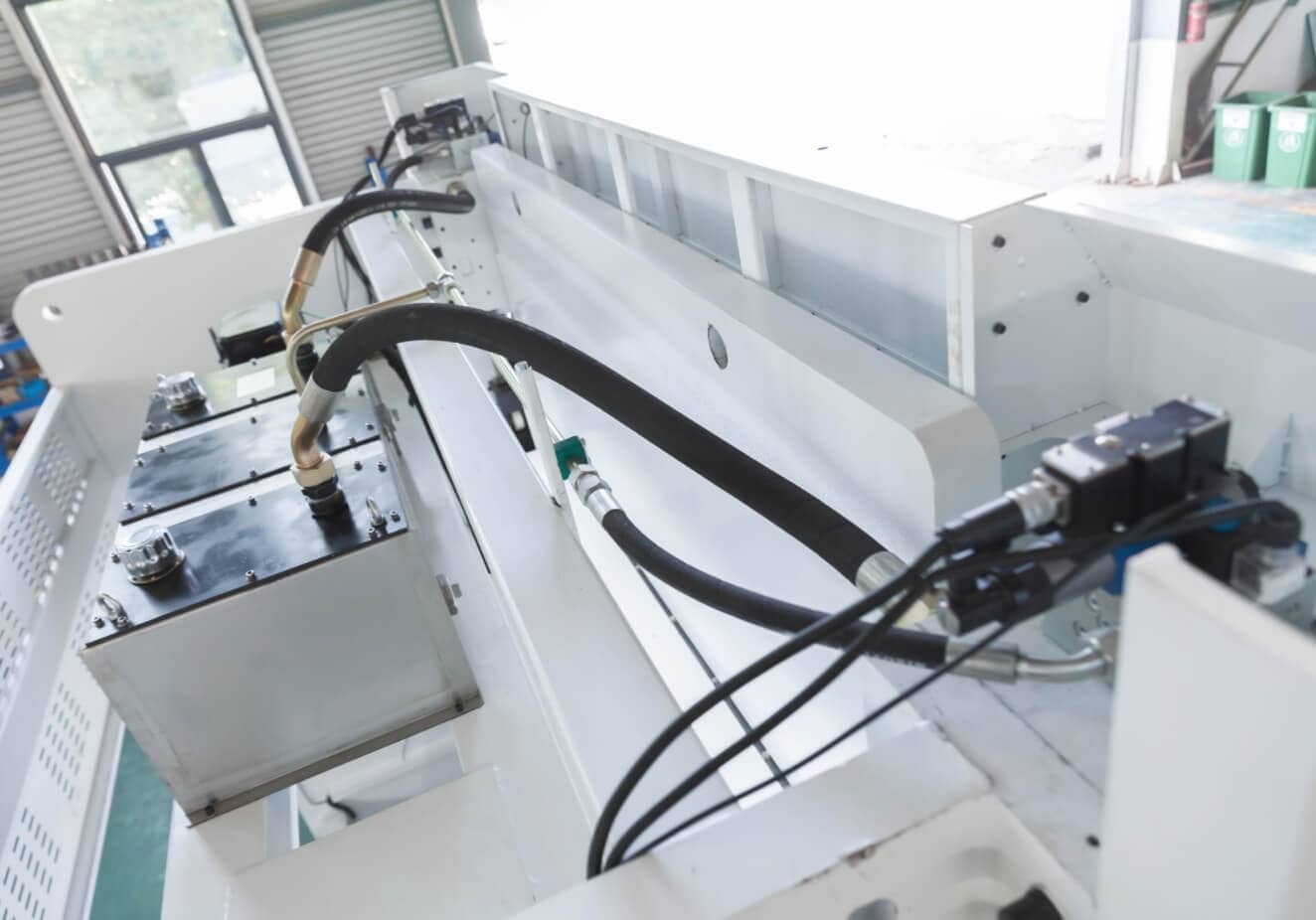
2.3 How to achieve a smooth bending operation
Smooth bending operations are mainly achieved by the control system. The control system is used to control the pressure and speed of the hydraulic oil to keep in sync with the speed to avoid pressure fluctuations caused by imbalance.
3. The type of press brake hydraulic cylinder
3.1 Comparison of single-acting and double-acting hydraulic cylinders
3.2 Common materials and manufacturing processes (such as aluminum alloy, carbon steel, etc.)
3.3 The principle of matching the size of the hydraulic cylinder with the tonnage
4. Maintenance and maintenance skills of hydraulic cylinder of brake press
4.1 Daily maintenance points (hydraulic oil replacement, seal inspection, etc.)
4.2 The importance of hydraulic oil selection and oil circuit cleaning
4.3 Seal replacement cycle and precautions
Before production, enterprises should use seals produced by regular manufacturers, if they use non-genuine ones, they may have a short service cycle. The normal use cycle is 6 months to 1 year, and when the work intensity is high, the cycle will be correspondingly shorter.
4.4 Safety Specifications for Cylinder Maintenance
Before maintenance, make sure that the cylinder is no longer running, drain all the oil, and cut off the power to prevent the risk of accidents. When maintaining, it is necessary to choose professional maintenance equipment to ensure that the equipment is not damaged by maintenance errors.
Maintenance personnel should wear gloves, goggles and other protective equipment to ensure their own safety. Attention should be paid to hygiene and environment when draining oil, and attention should be paid to the quality of the working environment and ecological effects in the plant.
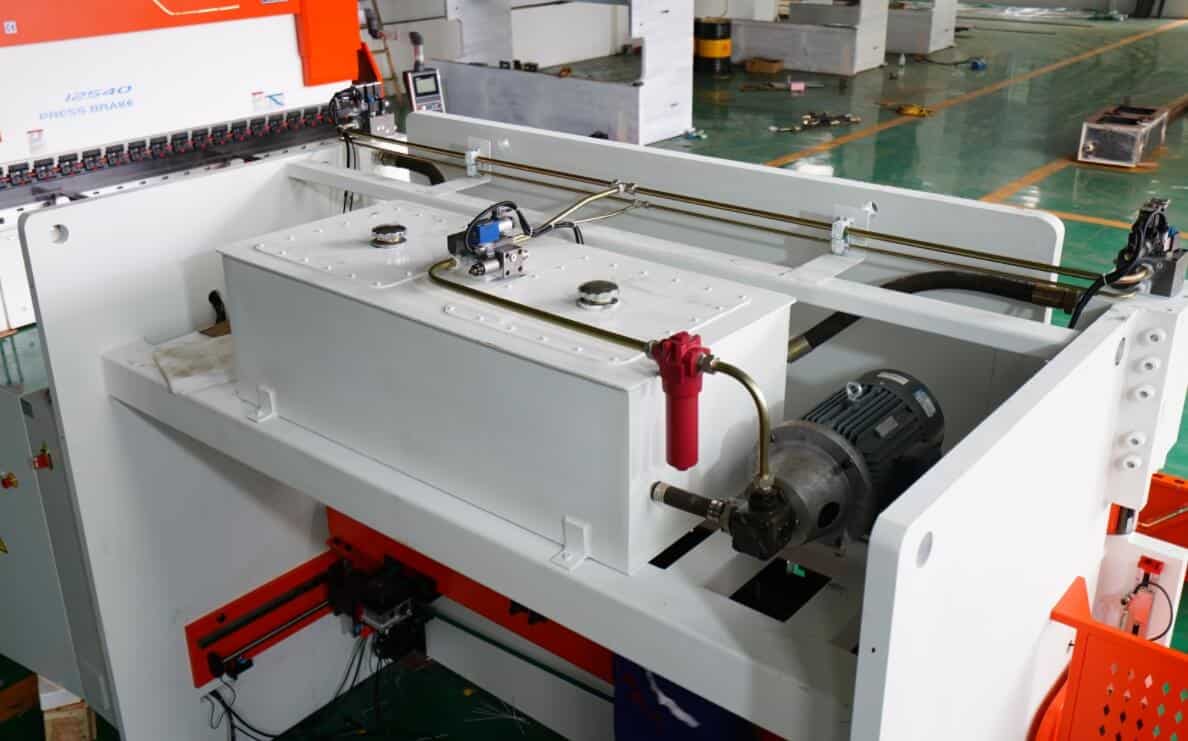
5. How do cylinder parameters affect press brake performance?
5.1 The relationship between different cylinder specifications (diameter, stroke) and bending force
The bending force of the cylinder is generally related to the diameter of the cylinder and the length of the stroke.
F = P*A (F is the force, P is the pressure, A is the cross-sectional area of the cylinder), the larger the diameter, the larger the cross-sectional area of the cylinder, and the greater the thrust, that is, the bending force; The longer the stroke, the greater the range of motion and the greater the range of bending force application. The greater the maximum bending force of a piece of equipment, the greater the ability to process thicker materials.
To meet daily production, enterprises should comprehensively measure these two factors when purchasing equipment.
5.2 The influence of the oil cylinder on the bending accuracy and life
If you want to do a good job, you must first sharpen your tools. The sophistication of the cylinder is reflected in the bending accuracy of the product. The tightness, stroke length, and mechanical wear of the cylinder may lead to oil leakage and pressure changes during the working process of the cylinder, which will affect the accuracy of the final bending.
5.3 Key parameters to consider when upgrading/replacing cylinders
First of all, consider the diameter of the new cylinder itself, the performance corresponding to the liquid stroke, and the performance determines the effect.
Then consider whether the size of the new cylinder corresponds to the old cylinder, and the installation method is not complicated to ensure compatibility.
Finally, consider the service life and cycle length of the new equipment.
6. Consideration of hydraulic cylinder upgrade and transformation
6.1 Hydraulic cylinder upgrades to improve performance (e.g., adding a supercharger)
Hydraulic oil is the “blood” of the hydraulic system, and its quality and oil quantity affect the normal operation of the hydraulic cylinder. Adding a supercharger to the cylinder is a good means. With the gain of the supercharger, the performance of the cylinder will be more significant when performing complex and heavy duty operations, and the better the ability to adapt to complex machining tasks, the higher the efficiency and productivity.
6.2 Compatibility with modern control systems
Modern control systems are the soul of modern production and are also suitable for hydraulic cylinders. When upgrading the cylinders, it is important to take into account the maturity of the electronic control technology to ensure that the hydraulic cylinders can be perfectly operated remotely or electronically.
Modern control systems send more accurate input and output signals, which can effectively avoid the abnormal operation of hydraulic cylinders due to mismatched control signals.
6.3 Cost-benefit analysis
When deciding to upgrade the cylinder, you should evaluate in detail whether the input cost is in line with the funds under the current version, and whether it can bring equivalent or value-added performance improvements. In case the equipment is damaged or does not achieve the expected effect, the economic loss should also be predetermined in advance. In this way, the rationality of the investment can be ensured.
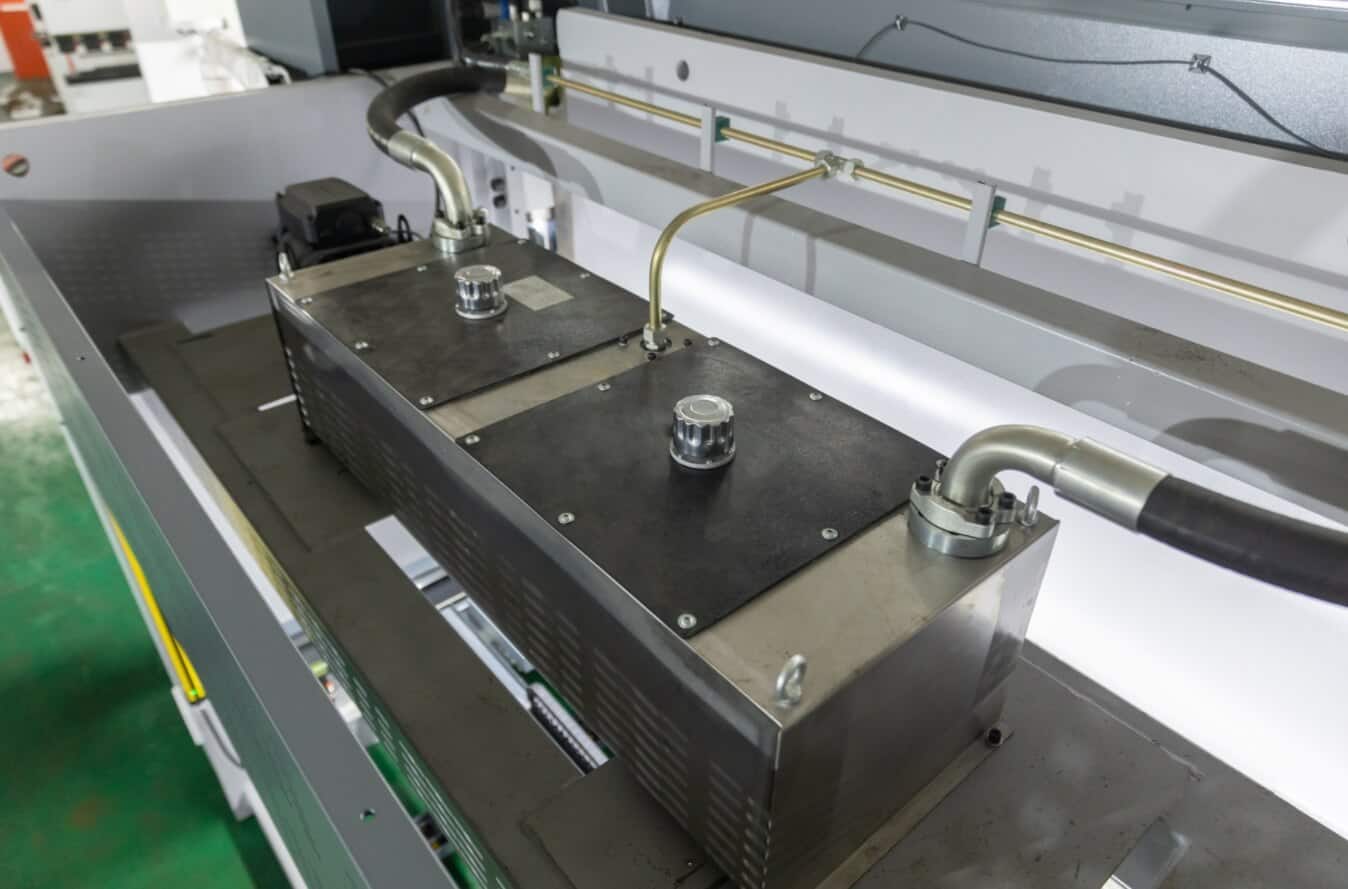
7. The key factors in choosing the right hydraulic cylinder
7.1 Effect of bore and pressure on flow rate
Flow rate (Q) = speed (V) * cross-sectional area (A), the flow rate is related to the bore, generally speaking, the larger the bore, the greater the flow rate.
Pressure, on the other hand, is the force exerted by the liquid, and the higher the pressure, the smaller the flow rate, the smaller the corresponding flow rate. Therefore, flow and pressure are balanced against each other.
7.2 Adapt to the brand and model of the press brake itself
When choosing a hydraulic cylinder, it is important to consider its fit. The specifications of the hydraulic oil should meet the specifications of the bending equipment. Avoid unnecessary losses due to model mismatch.
Hydraulic cylinder manufacturers usually provide detailed tables of additional product technical parameters and specifications before customers buy, and customers should see clearly before purchasing.
7.3 How to judge the quality and performance of hydraulic cylinders (test standards, certifications, etc.)
It is divided into three steps, first check the relevant standards and certifications of the cylinder product to see if it meets the industry standards, such as ISO, etc.
The second step is to check whether the manufacturer holds national certifications, such as ISO 9001 and other international standards.
If there is no problem with the first two, the third step is to operate the equipment and conduct performance tests, such as oil leakage detection and pressure test after long-term work. If the test fails, after-sales will be considered.
8. Conclusion and contact information (technical support and customer service channels)
This article introduces the working principle of the hydraulic cylinder, the daily care of the cylinder, how to choose the cylinder to upgrade, etc., so that users can understand the irreplaceable role of the hydraulic cylinder in the production plant, so that users know how to maintain and purchase or upgrade the cylinder attention points.
After-sales is a vital part of sales, and Raymax promises that after purchasing goods, there will be comprehensive technical support and after-sales service. Support telephone, email, online chat and other channels to solve customer questions. If you need technical support or purchase services, you can get more professional services through the contact information on the official website. Contact us
9 User Frequently Asked Questions (FAQs)
Further Reading
What is a Press Brake Back Gauge? Types and Key Components Explained!
Press Brake Dies Explained: Types, Applications, and golden rule of selection
Press Brake CNC Back Gauges Explained: Multi-Axis Systems, Installation & Troubleshooting
How Does an Electric Press Brake Work? Working Principle, Core Parts and Pros
The top 10 best press brake manufacturers in the world in 2025
CNC Press Brake Axis: Mastering Configurations from 2-Axis to 8+1 for Pro Results
Press Brake Bending Basics: Everything You Need to Know for Efficient Bending
What Is a Press Brake Used For? 16 Industry Applications and 8 Types of Bends
10 Press Brake Bending Problems and How to Fix Them in Sheet Metal
Hydraulic Press Brake Troubleshooting: The Ultimate Guide to Fix Common Problems
Ultimate Guide to Hydraulic Press Brake Maintenance: Top Tools, Schedules & Expert Tips
press brake technology: a guide to 11 Types of press brake bending process
Post Your Review
Share Your Thoughts And Feelings With Others
Hello, Customers!

Author introduction
My name is Francis Pan, and I am the foreign trade manager of RAYMAX. I have been engaged in the fields of metal manufacturing and CNC machinery for over 10 years. Welcome to visit our official website, I am more than happy to provide you with the best service and products.
Email: [email protected] | Wechat: 13645551070
Top Guidelines
- What is an 8 axis press brake: Why It’s the best investment for complex bends
- Press Brake Guarding Systems & Requirements: OSHA‑Compliant Injury Prevention Guide
- What Is a 3 Axis Press Brake? Complete Guide to Structure, Benefits & Selection
- What is a 4 Axis Press Brake? Configuration, Advantages and Uses analysis
- What is a 6 Axis Press Brake? Working Principles, Advantages, Applications, and Buying Guide
- What Is a Press Brake Used For? 16 Industry Applications and 8 Types of Bends
- Press Brake Sheet Follower: Smart Support for Long, Thick, Thin Sheets
- Fiber Laser Cutting Machine Process
- Press Brake Air Bending: Guide to Principles, Calculations & Best Practices
- What Materials Can a Fiber Laser Cut? A Practical Handbook of Metals, Non-Metals & Limitations
- What is a Fiber Laser Cutting Machine? The Ultimate Guide for 2025
- What is Laser Cutting Machine? The Ultimate Guide for 2025
- Top 10 Fiber Laser Cutting Machine Manufacturers of 2025
- Press Brake Buyers Guide: Expert Tips to Select, Compare, and Buy with Confidence
- Hydraulic Press Brake Troubleshooting: The Ultimate Guide to Fix Common Problems

